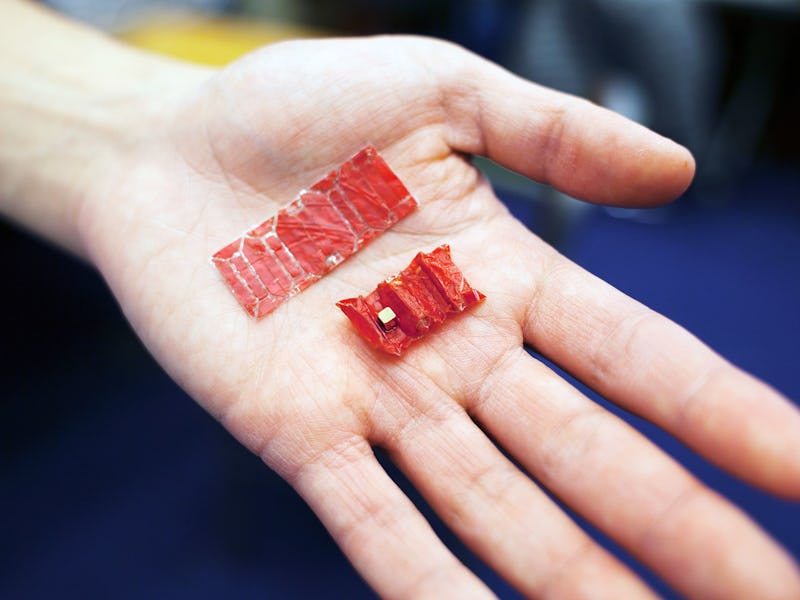Watch The Origami Robot Go To Work, Unfolding Inside Of Human Organs
We put all sorts of stuff in our bodies every day; now, the developers of this little robot hope to change the world in a similar way.

Scientists in Japan are developing a way for a tiny medical robot to enter your system and administer medicine — origami style. The team is made up of researchers from MIT, the University of Sheffield, and the Tokyo Institute of Technology, and while the initiative is not the first of its kind, the new functionalities are a major improvement from the original – that began as a scrawl on a paper in 2010.
The basic idea is that the robot will enter a patient’s system “folded up” in the form of a swallowed capsule. Once inside, the pill unfolds, and can be steered by external magnetic fields toward injuries or illnesses that should be removed. “For applications inside the body, we need a small, controllable, untethered robot system,” said researcher Daniela Rus, an Andrew and Erna Viterbi Professor who is leading one of the teams on the project. “It’s really difficult to control and place a robot inside the body if the robot is attached to a tether.”
The robot has two layers of structural material, sandwiching a substance that shrinks when heated; in the outer layers, a pattern of slits determines exactly how the robot will fold. The idea of the “origami robot” has been in development since 2010 and many earlier models still exist today. But this particular robot is finally ready to shine in front of an audience. Speaking on the older models, researcher Steven Guitron detailed what the major differences are in this version. “Stick-slip only works when, one, the robot is small enough and, two, the robot is stiff enough,” Guitron said. “With the original Mylar design, it was much stiffer than the new design, which is based on a biocompatible material.” 20 percent of the forward motion will be propelled by water inside of the body; the rest is all controlled.
Built to combat swallowed button batteries in youngsters, the new ‘bot debuted last month at a presentation for the International Conference on Robotics and Automation.